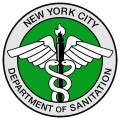APHIS ANNOUNCES EMERGING ANIMAL DISEASE PREPAREDNESS AND RESPONSE PLAN
WASHINGTON, July 14, 2017—The U.S. Department of Agriculture (USDA), Animal and Plant Health Inspection Service (APHIS), Veterinary Services (VS) is making the Emerging Animal Disease Preparedness and Response Plan available today. The plan outlines a strategy to detect and respond to emerging animal diseases and define the processes that APHIS will use to identify, evaluate, and respond to emerging diseases in animal populations.
Emerging disease events may negatively affect animal health, public health, and trade. Examples of emerging diseases in the U.S. in the past 20 years include porcine reproductive and respiratory syndrome, infectious salmon anemia, West Nile virus, and more recently porcine epidemic diarrhea virus. APHIS developed the framework for this plan in 2014, then shared an initial draft of the plan for input with Federal and State agencies, American Association of Veterinary Laboratory Diagnosticians (AAVLD), livestock groups, and individuals. Their feedback is included in the current plan. This is a living document, which may be updated as infrastructure or policies change.
The plan provides the VS strategic direction to detect and respond to emerging animal diseases and outlines the processes VS uses to identify, evaluate, and respond to emerging diseases in animal populations. Rather than providing a single process to fit all emerging diseases, the VS plan outlines roles and responsibilities across VS business units for evaluating animal health information and determining response options. The plan also describes the need for communication and collaboration between VS, State Animal Health Officials, and animal industry representatives and stakeholders to effectively detect and respond to emerging animal diseases.
When preparing and responding to emerging diseases, we must:
- Learn what diseases outside the U.S. could cause animal or public health concerns or impact trade and prepare for them.
- Detect, identify, and characterize disease events;
- Communicate with stakeholders and the public;
- Respond quickly to minimize the impact of disease events.
By working together, we can ensure a timely and appropriate response, and reduce the impact of an emerging disease on producers and the public, which in turn will help farmers and ranchers be successful and feed the world. You can view the response plan here.

















Follow Us